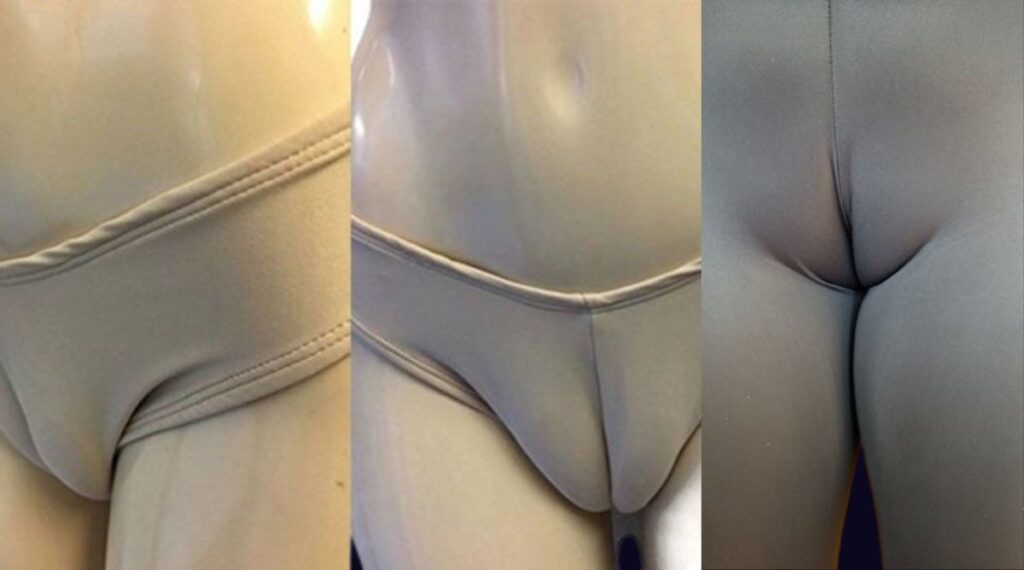In today’s society, where fashion trends often prioritize form-fitting clothing, the term “camel toe” has become a familiar part of our vernacular. Despite its prevalence in conversation, the phenomenon of cameltoe remains shrouded in social stigma and discomfort. This article explore the multifaceted aspects of cameltoe, delving into its causes, the social implications it carries, and offering potential solutions for individuals who experience it.
What is a Camel Toe?
Camel toe concealer, colloquially known as “CT,” refers to the visible outline of a woman’s labia majora through tight-fitting clothing, such as leggings, yoga pants, or swimsuits. The term itself derives its name from the resemblance of the shape to the split toes of a camel. While cameltoe can occur naturally due to the anatomy of the female genitalia, it becomes more prominent when the contours of the body are accentuated by clothing that clings closely to the skin.
You May Like: Understanding the Joy and Charm of Kate Spade Surprise
Causes of Camel Toe
Understanding the factors contributing to camel toe is essential in addressing its occurrence. Several elements play a role:
- Tight Clothing: The primary cause of cameltoe is wearing garments that are excessively tight or form-fitting. Tight clothing presses against the body, creating an indentation that highlights the contours of the genital area.
- Fabric Choice: The type of fabric used in clothing also influences the likelihood of camel toe. Stretchy materials like spandex or lycra conform closely to the body’s curves, making camel toe more visible. Thin fabrics exacerbate the issue by providing less coverage and structure.
- Body Shape: Women with fuller or more prominent labia may be more prone to cameltoe, as their anatomical features are more likely to be accentuated by tight clothing. However, it’s essential to note that cameltoe can occur in individuals of all body types.
- Improper Fit: Ill-fitting clothing, whether too small or incorrectly sized, can exacerbate camel toe. Garments that are too tight around the crotch area are particularly problematic, as they compress the genital area and increase the likelihood of cameltoe formation.
Read Here: Monkey Mart: Revolutionizing Convenience in Everyday Shopping
Social Implications
Despite being a natural occurrence, khloe kardashian camel toe is often met with social discomfort and stigma. Its implications extend beyond the physical, encompassing various social and psychological aspects:

- Sexualization: Cameltoe is sometimes unfairly sexualized, perpetuating the objectification of women’s bodies. The hyper-focus on this aspect of female anatomy can contribute to feelings of discomfort and vulnerability.
- Body Shaming: Individuals who experience camel toe may face ridicule or judgment for their appearance, leading to feelings of self-consciousness and low self-esteem. The pressure to conform to unrealistic beauty standards exacerbates these feelings, fostering a culture of body shaming.
- Gendered Expectations: There exists a double standard regarding cameltoe, with women often facing more scrutiny than men for similar wardrobe malfunctions. While men’s bulges are sometimes celebrated or overlooked, women’s camel toe is frequently met with disdain or mockery.
- Public Perception: Cameltoe in public settings can lead to unwanted attention or embarrassment, affecting one’s confidence and comfort. The fear of experiencing camel toe may deter individuals from wearing certain types of clothing or participating in activities they enjoy.
Related Article: Kybella Before and After: Redefining Your Jawline with Confidence
Addressing Camel Toe
While camel toe may be a source of discomfort for some individuals, there are strategies to minimize its occurrence and alleviate the associated social stigma:
- Clothing Choice: Opt for looser-fitting clothing styles that provide more room around the crotch area. Garments with a relaxed fit, such as A-line skirts or wide-leg pants, can help prevent cameltoe formation.
- Fabric Selection: Choose thicker or less stretchy fabrics that offer more coverage and structure. Materials like denim or cotton provide better support and reduce the visibility of camel toe compared to stretchy spandex or thin synthetics.
- Proper Sizing: Ensure that clothing fits well and is not too tight or small. Taking accurate measurements and consulting size charts can help individuals find the right fit and minimize the risk of cameltoe.
- Camel Toe Guards: Some individuals use silicone or fabric inserts designed to conceal cameltoe and create a smoother silhouette. These inserts, often referred to as “camel toe guards” or “camel toe pads,” can be discreetly worn underneath clothing to mitigate the appearance of cameltoe.
- Body Positivity: Embrace body positivity and challenge societal norms that perpetuate shame or stigma surrounding natural bodily features. Celebrating diversity in body shapes and rejecting unrealistic beauty standards fosters a culture of acceptance and self-love.
Conclusion
Camel toe is a natural phenomenon exacerbated by tight clothing and certain body types. While it may elicit social discomfort or embarrassment, it is essential to challenge the stigma associated with it and promote body positivity. By understanding the causes of camel toe and implementing strategies to address it, individuals can feel more comfortable and confident in their own skin. Ultimately, embracing diversity and celebrating natural body shapes is key to fostering a more inclusive and accepting society. As we continue to navigate the complexities of body image and societal expectations, let us strive to create a culture where all bodies are valued and respected, free from judgement and stigma.
Also Read: Comprehensive Guide to Perky Boobs: Beauty, Care, and Confidence





More Stories